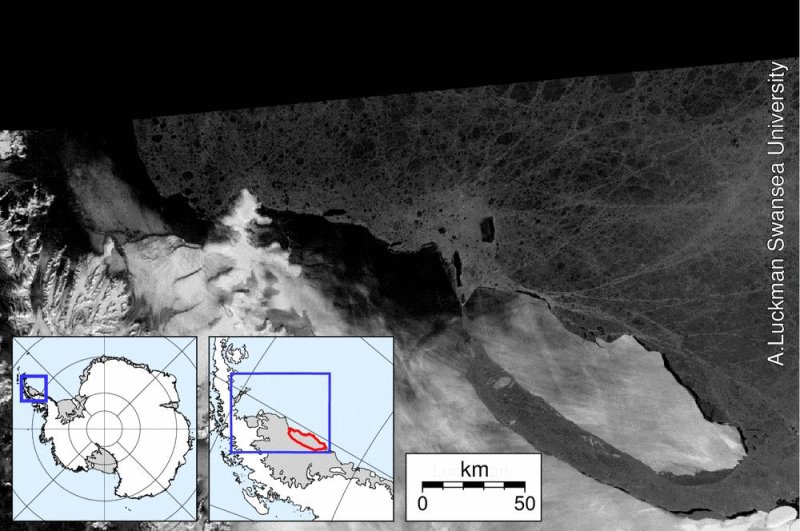Over the last year, the world's sixth largest iceberg has begun to spin and drift at an accelerated pace. Photo by Adrian Luckman/ESA/Copernicus Mission/Sentinel-1
July 11 (UPI) -- One of the largest icebergs in the world, A68, is on the move. Since it calved from Antarctica's Larson C ice shelf two years ago, the iceberg has rotated 270 degrees and drifted 155 miles north, carried by the ocean current known as the Weddell Gyre.
Glacier expert Adrian Luckman, a geography professor at Swansea University in Wales, published an animation of the glacier's movements on his blog.
"This animation is made from hundreds of Sentinel-1 microwave images stitched together in five-day intervals," Luckman wrote in the post.
Satellite records suggest A68 is the sixth largest iceberg currently floating in Earth's oceans. It is roughly the size of Maryland, or four times the size of the city of London, and its volume is twice that of Lake Erie. The iceberg weighs more than 1 trillion metric tons.
For more than a year after it initially calved, A68 remained mostly motionless, grounded on the Bawden Ice Rise, a shallow seabed near the edge of the Larsen ice shelf. Last fall, the iceberg began to disengage from the seafloor, spin and drift. Over the last year, A68 has begun to move at an accelerated pace.
When it first split, scientists expected the iceberg to quickly break apart and disintegrate, but it has remained mostly intact. Its resilience is surprising, given its relatively slim shape. Despite a length of nearly 100 miles, the iceberg's ice measures less than 2,000 feet at its thickest point.
Iceberg calving is a natural phenomenon. As inland glaciers supply coastal ice shelves with new ice, older ice is pushed out to sea. But a growing body of evidence suggests rising water and air temperatures are triggering instabilities along the coasts of Antarctica and Greenland, accelerating melting and increases the rates of iceberg calving.















